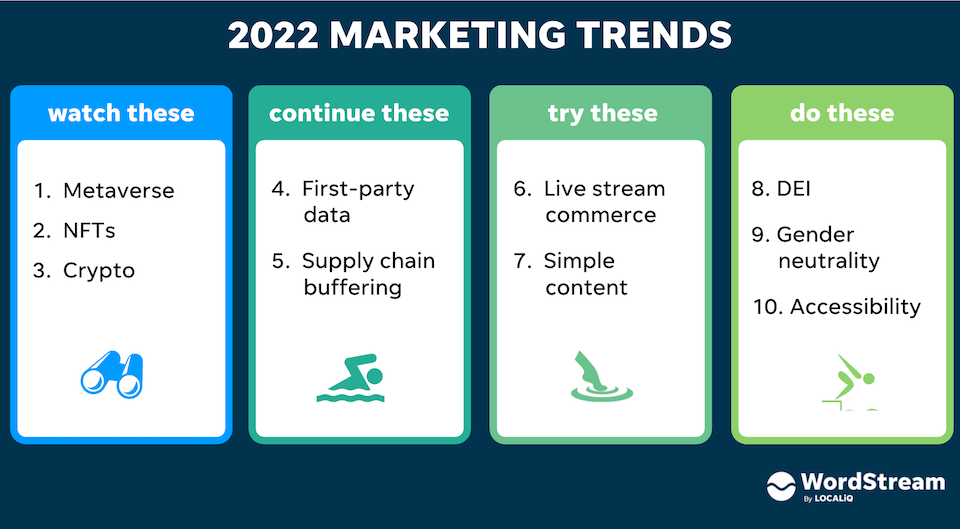
8 Telltale Signs It’s Time to Hire a Marketing Agency
October 21, 2020
23 Benefits of Social Media for Business
October 21, 2020
There’s always a hot buzzword in marketing, and right now it’s the term “sales enablement.” Gartner defines sales enablement as “the activities, systems, processes, and information that support and promote knowledge-based sales interactions with clients and prospects.”
While every marketer has a slightly different definition of what it is, to me, it generally means providing salespeople with the most effective tools, and content, to sell more effectively.
I spoke to three marketing experts to get their take on sales enablement and its importance. Here’s what they said.
“Sales enablement is about accelerating, improving, and making things more efficient.”aurav Harode knows sales enablement. His company, Enablix (he’s the CEO), is built around the concept. The brand offers software that lets small businesses combine their organization’s sales and marketing content assets in one central portal.
According to Harode, sales enablement is all about getting sales faster and quicker, and about winning more deals. It’s multifaceted, and while sales training and sales ops are a part of the equation, content is the biggest bulk of it. Getting the right content to the right audience requires more than just slapping together a blog or a white paper; it also includes the sales decks and demo scripts that are so instrumental to sales professionals.
Harode sees the key to sales enablement for the small to mid-sized market as “doing more with less.” How can you get a bigger ROI for the same investment?
It starts with digital content management, which he sees as the precursor to sales enablement. Once you can organize that content in a way that’s meaningful to a buyer at the stage of the lifecycle that she’s in—and that your sales reps can access when they need—then you can scale your results.
Sales enablement may be gaining momentum, but right now, Harode says it’s not yet properly institutionalized and used by most companies, which means sales reps are wasting a lot of time. But things are changing rapidly. He says, “I believe that as things move forward, we are going to see the individual pillars of sales enablement maturing and standing on their own.”
Whereas right now, everything from sales training to onboarding and content is lumped together, Harode sees that changing as each will become strong enough to stand on its own.
It’s the various cross-functional groups within the organization giving sales the tools they need to sell.
To Randy Frisch, CMO at Uberflip, a digital content experience platform for marketers, sales enablement is all about collaboration between the sales team and other areas of the business.
When the sales team has access to the right tools and content, it can sell to prospects or existing customers more easily. Frisch says at Uberflip when an account executive is trying to convert a lead, the Product Marketing and Channel Enablement team, that constantly hones and redefines the brand’s go-to-market message, ensures the exec has access to the messaging and uses cases to help him close the deal.
He’s also seen the Customer Success team provide value to the account executive by providing insight into struggles customers have seen, as well as potential opportunities for growth with an existing customer. It’s that cross-functional collaboration that helps a brand power demand generation strategies and provide a level of personalization and detail at scale.
It’s not a best practice—it is a must-have.
Nissar Ahamed, the founder/publisher of CareerMetis.com, doesn’t see sales enablement as an option anymore. Any brand that wants to compete in today’s marketplace mustunderstand the importance of aligning marketing with sales. He says, “If any marketing team is disconnected with sales, there’s an easy recipe for disaster or failure.”
On the other hand, Ahamed says the more aligned the two are, the more successful they are. “Marketing needs to support sales, not just through CRM and lead flow, but [also] making sure they have the right message to align with the buyers’ journey.”
According to Ahamed, the earlier this aligning happens, with marketing teams providing the sales team with assets they can give to customers, the more likely it is that these prospects will go through buyer’s journey. It’s content like thought leadership pieces, case studies, and marketing automation that make this conversion from lead to customer possible.
Brands need an alliance between sales and marketing
While each of the people I interviewed had a slightly different take on sales enablement, one thing is clear: brands need an alliance between sales and marketingto achieve it. No longer can these two departments work in silos. When the two align their goals and work together with real-time data and content that’s targeted to a given audience, great things happen.



